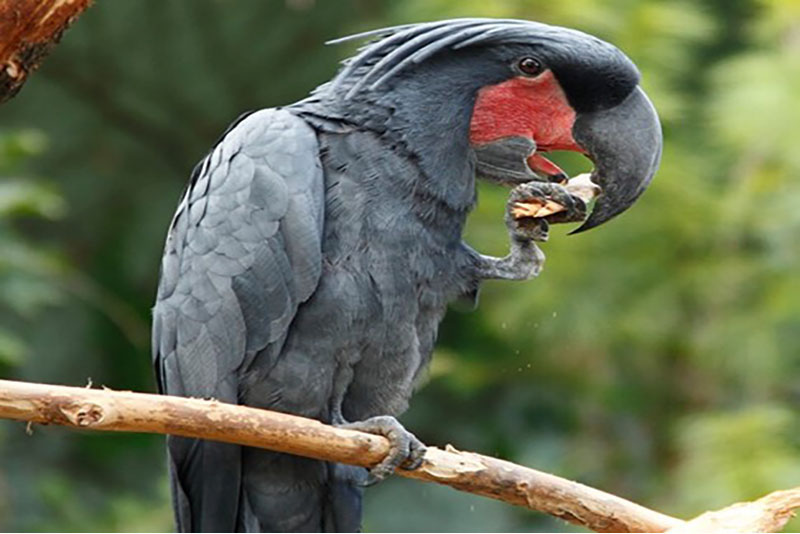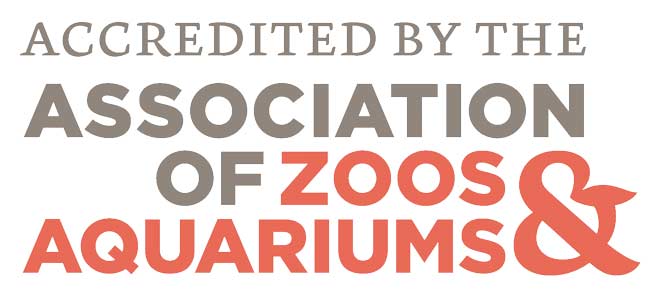Palm cockatoos can be found alone or in larger groups and will spend their time high in the forest canopy. They will feed in large groups where one bird, “sentinel”, will watch for predators. If a predator or threat is nearby, the “sentinel” will alarm cry to alert the rest of the flock. Palm cockatoos will also “blush” when excited.
Palm Cockatoos exhibit a unique drumming behavior. They choose a drum stick with their beak, and use that stick to bang or drum on a hollow tree. They also drum with their feet. After drumming, they will sometimes tear up the stick, by shredding it into nesting material and place that in the hollow. This is done to impress a female.
Fun Facts:
- The Palm Cockatoo has the second largest bill of any parrot (only the Hyacinth Macaw has a larger bill)
- As well as their whistle call, Palm Cockatoos have a much quieter “hello” call that can sound surprisingly human. It can come as quite a shock to hear this call in a remote rainforest.
- The Palm Cockatoo has a 3 to 3.5 inch beak that is incredibly strong.
Conservation Threats:
Least Concern








![tampa-640x300-54[29]-noarrow](jpg/tampa-640x300-5429-noarrow.jpg)


